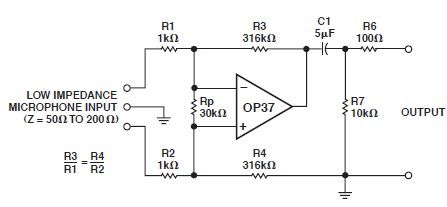
ultrasonic receiver circuit

The ultrasonic receiver utilized in this circuit is specifically designed to vibrate optimally at a frequency of approximately 40 kHz. Consequently, the transmitter associated with this receiver must also emit waves at 40 kHz. When these waves interact with the receiver, it vibrates and generates electrical impulses at the same frequency of 40 kHz. These electrical signals are then amplified by two operational amplifiers within the circuit, and the amplified output is directed to a 567 integrated circuit (IC). This IC functions as a phase-locked loop (PLL) tone decoder, meaning it outputs a signal when it detects an input frequency that matches its preset frequency of 40 kHz. A practical application of this simple receiver, when paired with a compatible transmitter, is as a proximity sensor, which can assist robots in avoiding collisions with walls. For effective operation in this application, the transmitter and receiver transducers must be positioned in such a way that the receiver only captures echoes of the transmitted signal rather than the direct transmitted signal itself.
The circuit operates by first generating ultrasonic waves using the transmitter, which is configured to produce a continuous wave at 40 kHz. This wave travels through the environment and reflects off nearby objects. The receiver, tuned to the same frequency, detects these reflections. When the transmitted waves hit an object, they bounce back towards the receiver, causing it to vibrate at 40 kHz. This vibration generates an electrical signal that is weak and requires amplification to be useful.
The two operational amplifiers are configured to increase the strength of the received signal. The first op-amp typically serves as a voltage amplifier, increasing the amplitude of the received signal. The second op-amp may be configured as a filter to eliminate noise and improve the signal-to-noise ratio, ensuring that only the desired frequency is amplified.
The output from the operational amplifiers is then fed into the 567 IC, which is sensitive to the specific frequency of 40 kHz. The PLL within the 567 IC locks onto the incoming signal frequency, and if it matches the set frequency, it produces a high output signal. This output can be used to trigger other components in a system, such as activating an alert or controlling the movement of a robot.
In practical applications, proper placement of the transmitter and receiver is crucial. The receiver should be oriented to receive only the echoes of the ultrasonic waves, which requires careful alignment to avoid direct reception of the transmitted signal. This setup allows for accurate detection of nearby objects, making it an effective solution for obstacle avoidance in robotic systems. The simplicity and effectiveness of this circuit make it a popular choice for various proximity sensing applications.Since the ultrasonic receiver used in this circuit is one designed to vibrate optimally at about 40 kHz, the transmitter paired with this receiver must also transmit 40 kHz waves. When these waves hit the receiver, the receiver vibrates and produces electric impulses, also at 40 kHz.
These electric signals are amplified by the two op amps in the c ircuit, the amplified output of which are fed into the 567 IC. This is a PLL tone decoder, i. e. , it outputs a signal if it detects an input that is tuned to its set frequency (40 kHz in this case). One example of application of this simple receiver (if paired with a matching transmitter, that is) is as a proximity sensor, such as one that can help a robot avoid running into walls.
If used in that manner, the transmitter and receiver transducers must be positioned such that the receiver will only receive echoes of the transmitted signal and not the transmitted signal itself. 🔗 External reference
The circuit operates by first generating ultrasonic waves using the transmitter, which is configured to produce a continuous wave at 40 kHz. This wave travels through the environment and reflects off nearby objects. The receiver, tuned to the same frequency, detects these reflections. When the transmitted waves hit an object, they bounce back towards the receiver, causing it to vibrate at 40 kHz. This vibration generates an electrical signal that is weak and requires amplification to be useful.
The two operational amplifiers are configured to increase the strength of the received signal. The first op-amp typically serves as a voltage amplifier, increasing the amplitude of the received signal. The second op-amp may be configured as a filter to eliminate noise and improve the signal-to-noise ratio, ensuring that only the desired frequency is amplified.
The output from the operational amplifiers is then fed into the 567 IC, which is sensitive to the specific frequency of 40 kHz. The PLL within the 567 IC locks onto the incoming signal frequency, and if it matches the set frequency, it produces a high output signal. This output can be used to trigger other components in a system, such as activating an alert or controlling the movement of a robot.
In practical applications, proper placement of the transmitter and receiver is crucial. The receiver should be oriented to receive only the echoes of the ultrasonic waves, which requires careful alignment to avoid direct reception of the transmitted signal. This setup allows for accurate detection of nearby objects, making it an effective solution for obstacle avoidance in robotic systems. The simplicity and effectiveness of this circuit make it a popular choice for various proximity sensing applications.Since the ultrasonic receiver used in this circuit is one designed to vibrate optimally at about 40 kHz, the transmitter paired with this receiver must also transmit 40 kHz waves. When these waves hit the receiver, the receiver vibrates and produces electric impulses, also at 40 kHz.
These electric signals are amplified by the two op amps in the c ircuit, the amplified output of which are fed into the 567 IC. This is a PLL tone decoder, i. e. , it outputs a signal if it detects an input that is tuned to its set frequency (40 kHz in this case). One example of application of this simple receiver (if paired with a matching transmitter, that is) is as a proximity sensor, such as one that can help a robot avoid running into walls.
If used in that manner, the transmitter and receiver transducers must be positioned such that the receiver will only receive echoes of the transmitted signal and not the transmitted signal itself. 🔗 External reference
Warning: include(partials/cookie-banner.php): Failed to open stream: Permission denied in /var/www/html/nextgr/view-circuit.php on line 713
Warning: include(): Failed opening 'partials/cookie-banner.php' for inclusion (include_path='.:/usr/share/php') in /var/www/html/nextgr/view-circuit.php on line 713





